Public Perception
Stereotypes surrounding Indigenous peoples play a significant role in the MMIW crisis. Many non-Indigenous individuals harbor misconceptions about Indigenous cultures, often viewing them through a narrow lens of historical narratives. These outdated perceptions can lead to a lack of empathy and understanding, which further perpetuates violence against Indigenous women.
Societal attitudes often diminish the importance of MMIW cases. When Indigenous women go missing or are murdered, the media coverage is frequently lacking. Stories tend to vanish as quickly as the victims themselves. This invisibility can create a chilling effect, making families feel their loved ones’ lives matter less, leading to further victimization.
Additionally, these stereotypes can result in misguided assumptions by law enforcement. They may not prioritize cases involving Indigenous women, dismissing them as mere “runaways” or “troubled individuals.” Such attitudes neglect the reality that these women are often victims of systemic violence and exploitation.

Resource Allocation
The lack of federal and state resources dedicated to addressing MMIW is a staggering issue. Despite the crisis being recognized, funding for prevention programs, victim services, and law enforcement training remains woefully inadequate. The U.S. Department of Justice has initiated some programs, but the overall financial support is still lacking. For those interested in the environmental impacts on Indigenous lands, “Rising: Dispatches from the New American Shore” by Elizabeth Rush provides a poignant look at climate change and its effects on coastal communities.
Many Indigenous communities face resource constraints that limit their ability to address this crisis effectively. With limited access to funding, programs aimed at prevention and support struggle to gain traction. This lack of resources not only hampers investigations but also prevents communities from establishing the necessary safety nets for their women and girls.
Moreover, the bureaucratic hurdles involved in securing funding can be overwhelming. Indigenous organizations often wrestle with complex application processes, which can deter them from pursuing grants. The result is a concerning gap where urgent needs go unmet, and Indigenous women continue to be at risk.
In conclusion, addressing the MMIW crisis requires a multifaceted approach. Combating societal stereotypes and allocating adequate resources are crucial steps. By fostering understanding and ensuring that Indigenous communities receive the necessary support, we can work toward creating a safer environment for all.
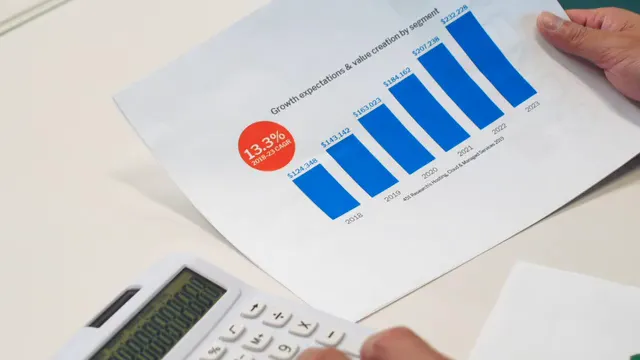
Conclusion
The statistics on Missing and Murdered Indigenous Women (MMIW) in 2023 paint a stark picture of a crisis that is both alarming and heartbreaking. Over 84% of Indigenous women have experienced violence in their lifetimes, with the murder rate for Indigenous women being ten times higher than that of other ethnic groups. This crisis is not just about numbers; it represents the lost lives of mothers, daughters, sisters, and friends. Each statistic signifies a life altered forever by violence, and it serves as a call to action for all of us.
The impact of MMIW extends beyond the individual victims; it reverberates throughout families and communities. The trauma experienced by those left behind creates a ripple effect that can last for generations. As families search for answers, they often confront systemic barriers and a lack of support from law enforcement, leading to a profound sense of despair. We must acknowledge the urgency of this issue and work together to create a safer environment for Indigenous women. For a deeper dive into Indigenous literature, consider “The Heartbeat of Wounded Knee” by David Treuer, which chronicles Native American history and culture.
Now, more than ever, it is crucial for readers to engage with advocacy efforts. You can support Indigenous organizations that fight tirelessly for justice, awareness, and healing. Consider participating in events dedicated to MMIW, whether locally or online. Share information on social media, contribute to fundraising efforts, or volunteer your time. Every action counts, and your voice can amplify the call for justice.
Hope exists in the growing awareness of MMIW issues. Increased activism, community engagement, and legislative efforts signal a shift toward change. As more people become informed, we can challenge the systemic injustices that have fueled this crisis. By supporting initiatives like Savanna’s Act and the Not Invisible Act, we can work toward a future where Indigenous women are safe, heard, and empowered.
Together, we can honor the lives of those lost and stand in solidarity with their families. Change is possible, and it starts with each of us. Let’s join hands, raise our voices, and demand a world where every Indigenous woman can live without fear. For those looking to explore more about Indigenous culture, “The Native American Experience” by John A. McClure is a great resource.

FAQs
What does MMIW stand for?
MMIW stands for Missing and Murdered Indigenous Women. This term encompasses the alarming rates of violence faced by Indigenous women, girls, and 2SLGBTQI+ individuals. MMIW is a critical issue that highlights the intersection of systemic racism, colonialism, and gender-based violence affecting Indigenous communities across North America.
What are the main challenges faced by Indigenous women today?
Indigenous women face numerous challenges, including high rates of violence, lack of access to justice, and societal stigma. Systemic issues such as inadequate law enforcement responses and underreporting of crimes further complicate these challenges. Many Indigenous women experience violence from intimate partners, and societal stereotypes can lead to a lack of empathy and understanding. The absence of resources exacerbates the situation, making it difficult for victims to seek help and support.
How can I help raise awareness about MMIW?
You can take several actionable steps to raise awareness about MMIW. Participate in local and national events, such as the National Day of Awareness for Missing and Murdered Indigenous Women on May 5. Educate yourself and others by sharing information on social media or organizing discussions in your community. Support Indigenous organizations working on MMIW issues through donations or volunteering. Every effort counts in amplifying the voices of those affected by this crisis.
Are there any specific statistics on MMIW in my state?
To find specific statistics on MMIW in your state, consider researching local organizations and resources focused on Indigenous issues. Websites dedicated to MMIW advocacy often provide information on state-specific statistics and initiatives. Engaging with local Indigenous groups can also yield valuable insights into the challenges faced by Indigenous communities in your area.
Please let us know what you think about our content by leaving a comment down below!
Thank you for reading till here 🙂
All images from Pexels
Introduction
The issue of missing and murdered Indigenous women (MMIW) has reached critical levels in 2023. This crisis is not just numbers; it’s a haunting reality that affects countless lives within Indigenous communities. The alarming statistics reveal a stark truth: Indigenous women and girls face violence at a rate significantly higher than their non-Indigenous counterparts. The urgency to address this issue is paramount, as families mourn their loved ones, often without any answers.
Recent data indicates that over 4 out of 5 Indigenous women have faced violence in their lifetimes. A staggering 10 times higher murder rate than other ethnicities underscores the severity of this crisis. With 56% of Indigenous women experiencing physical assault and nearly 46% suffering sexual violence, the implications are dire. The lack of adequate responses from law enforcement and systemic barriers compound the pain of those affected.
To understand the gravity of the situation, we must consider the historical context. Centuries of systemic racism and colonialism have laid a foundation of violence against Indigenous peoples. Forced removals, land seizures, and cultural erasure have left deep scars. As a result, many Indigenous individuals experience a lack of trust in the systems meant to protect them. If you’re looking to dive deeper into these themes, check out “The Only Good Indians” by Stephen Graham Jones, which explores the complex narratives surrounding Indigenous identity and trauma.
This article will delve into current MMIW statistics, their implications for Indigenous communities, and the urgent actions required for change. By shedding light on this crisis, we aim to foster awareness and inspire advocacy for effective solutions. Let’s not only highlight the statistics but also the stories behind them. Together, we can strive toward justice for the victims and healing for their families.
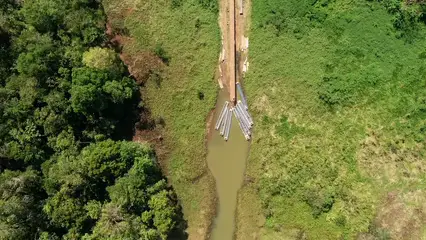
Key MMIW Statistics for 2023
National Statistics Overview
The National Crime Information Center (NCIC) has released heart-wrenching stats for 2023. Nearly 5,712 cases of missing American Indian and Alaska Native women and girls were reported. That’s right, folks—5,712! Yet, only 116 cases made it into the U.S. Department of Justice’s NamUs database. This discrepancy is alarming, highlighting the systemic failures in addressing these heartbreaking cases.
When we compare these statistics with other demographics, the disparity becomes painfully evident. Indigenous women are murdered at a rate 10 times higher than women from other ethnic backgrounds. In fact, homicide stands as the third leading cause of death for Indigenous women. This stark reality underscores the urgent need for societal change. For those interested in a deeper understanding of Indigenous experiences, “There There” by Tommy Orange provides a powerful narrative on urban Native American life.
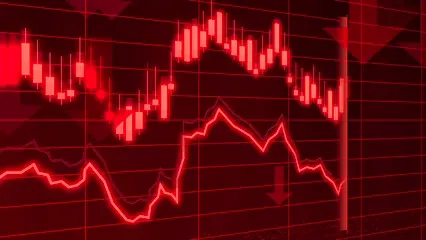
Specific Statistics by Region
Let’s zoom in on the U.S. data. The Urban Indian Health Institute has shed light on violence against Indigenous women across various states. For instance, in states like South Dakota and Montana, Indigenous women experience violence at rates that are up to ten times higher than the national average. In South Dakota, 84% of Indigenous women report experiencing violence in their lifetime, with 56% having faced sexual violence.
In Canada, Statistics Canada reports that Indigenous women and girls are six times more likely to be murdered compared to their non-Indigenous counterparts. Between 2009 and 2021, Indigenous women made up about 2-3% of Canada’s population but accounted for 5-7% of homicide victims. This alarming trend not only reflects deep-rooted societal issues but also showcases the urgent need for action. To explore these themes further, consider reading “Indian Horse” by Richard Wagamese, a poignant story that reflects on the impact of residential schools.

Victimization Rates
Now, let’s take a look at victimization rates. A staggering 84.3% of Indigenous women reported experiencing violence in their lifetime. This includes physical, emotional, and sexual violence. It’s a statistic that should make everyone stop and think: 4 out of 5 Indigenous women? That’s unacceptable!
Trends over time show that while awareness is increasing, the horrifying rates of violence remain stagnant. From 2001 to 2014, the average homicide rate for Indigenous women was four times higher than that of their non-Indigenous counterparts. Sadly, these numbers indicate that despite efforts to raise awareness, the violence persists. To understand the broader implications, check out “The Round House” by Louise Erdrich, which addresses the impact of violence against Indigenous women.
The numbers we see are not just statistics; they represent lives—mothers, daughters, sisters—who have faced unimaginable pain. The urgency to address this crisis cannot be overstated. When it comes to protecting Indigenous women, we must demand systemic changes that ensure justice and safety.
As we move forward, let’s remember that behind every statistic is a story, a life impacted by this ongoing crisis. It’s time to amplify these voices and advocate for change. Together, we can create a future where Indigenous women are safe, heard, and valued.
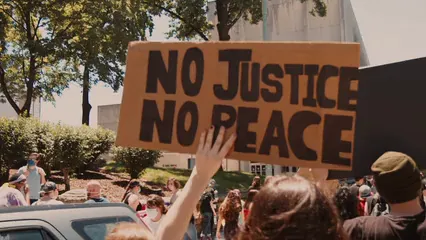
The Impact of MMIW on Communities
Psychological and Social Effects
The crisis of missing and murdered Indigenous women (MMIW) reverberates deeply through families and communities, creating waves of trauma that can last generations. When a loved one goes missing or is murdered, it leaves a gaping hole in the fabric of community life. Families endure heartbreak and confusion, often without answers or closure. This absence doesn’t just affect immediate family members; friends, extended family, and the entire community feel the impact.
Such trauma is not just emotional; it manifests physically and psychologically. Many survivors experience anxiety, depression, and a profound sense of loss. The stress of living in a community where violence is rampant can lead to a cycle of despair. This generational trauma can hinder the ability of future generations to heal, perpetuating a cycle of grief and violence. For those seeking to understand the resilience of Indigenous communities, “Heart Berries: A Memoir” by Terese Marie Mailhot offers an intimate look into personal and cultural healing.
Economically, the effects are equally dire. Communities plagued by violence often find it challenging to attract businesses and economic opportunities. A lack of safety leads to decreased investments and job creation, forcing many to relocate. The economic impact is not just numbers; it means fewer resources for education, healthcare, and community development. When safety is compromised, the potential for thriving communities diminishes.
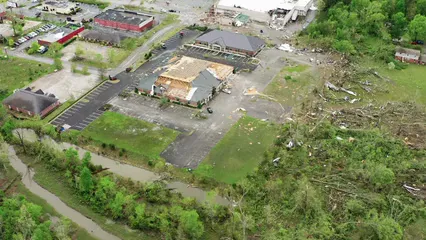
Advocacy and Awareness Efforts
In response to this crisis, several key organizations are stepping up to make a difference. The National Indigenous Women’s Resource Center (NIWRC) and the Coalition to Stop Violence Against Native Women are at the forefront. These organizations work tirelessly to provide resources, education, and support for affected families. They advocate for policy changes and raise awareness about the systemic issues contributing to MMIW.
Public awareness campaigns also play a pivotal role. The National Day of Awareness for MMIW, observed on May 5, serves as a powerful reminder of the ongoing crisis. Events across the nation bring communities together to honor the victims and demand justice. The effectiveness of these campaigns is evident as they spark conversations and foster solidarity. To further your understanding of Indigenous history, consider reading “An Indigenous Peoples’ History of the United States” by Roxanne Dunbar-Ortiz, which provides essential insights into the historical context of these issues.
Social media has amplified these efforts, reaching millions. Hashtags like #MMIW and #NoMoreStolenSisters are more than just trending topics; they are calls to action. They unite people in a shared mission to bring attention to the plight of Indigenous women.
Through these advocacy efforts, there is hope for change. By raising awareness and pushing for justice, communities can begin to heal. The stories of those lost must be heard loud and clear, driving the movement forward. Together, these organizations and campaigns strive to create a safer environment for Indigenous women and their communities, fostering healing and resilience in the face of adversity.
The journey towards justice is long, but with persistent advocacy and awareness, there is a light at the end of the tunnel. The impact of MMIW is profound, yet the collective effort to address it can lead to meaningful change. It’s time to stand together, support each other, and ensure that every voice is heard. If you’re curious about the cultural significance of food in Indigenous communities, check out “Fry Bread: A Native American Family Story” by Kevin Noble Maillard.
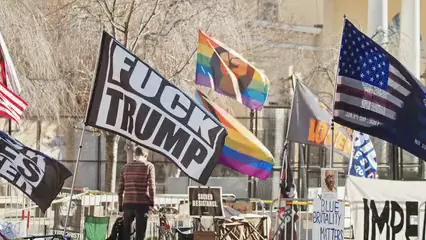
Social and Cultural Barriers
Public Perception
Stereotypes surrounding Indigenous peoples play a significant role in the MMIW crisis. Many non-Indigenous individuals harbor misconceptions about Indigenous cultures, often viewing them through a narrow lens of historical narratives. These outdated perceptions can lead to a lack of empathy and understanding, which further perpetuates violence against Indigenous women.
Societal attitudes often diminish the importance of MMIW cases. When Indigenous women go missing or are murdered, the media coverage is frequently lacking. Stories tend to vanish as quickly as the victims themselves. This invisibility can create a chilling effect, making families feel their loved ones’ lives matter less, leading to further victimization.
Additionally, these stereotypes can result in misguided assumptions by law enforcement. They may not prioritize cases involving Indigenous women, dismissing them as mere “runaways” or “troubled individuals.” Such attitudes neglect the reality that these women are often victims of systemic violence and exploitation.

Resource Allocation
The lack of federal and state resources dedicated to addressing MMIW is a staggering issue. Despite the crisis being recognized, funding for prevention programs, victim services, and law enforcement training remains woefully inadequate. The U.S. Department of Justice has initiated some programs, but the overall financial support is still lacking. For those interested in the environmental impacts on Indigenous lands, “Rising: Dispatches from the New American Shore” by Elizabeth Rush provides a poignant look at climate change and its effects on coastal communities.
Many Indigenous communities face resource constraints that limit their ability to address this crisis effectively. With limited access to funding, programs aimed at prevention and support struggle to gain traction. This lack of resources not only hampers investigations but also prevents communities from establishing the necessary safety nets for their women and girls.
Moreover, the bureaucratic hurdles involved in securing funding can be overwhelming. Indigenous organizations often wrestle with complex application processes, which can deter them from pursuing grants. The result is a concerning gap where urgent needs go unmet, and Indigenous women continue to be at risk.
In conclusion, addressing the MMIW crisis requires a multifaceted approach. Combating societal stereotypes and allocating adequate resources are crucial steps. By fostering understanding and ensuring that Indigenous communities receive the necessary support, we can work toward creating a safer environment for all.

Conclusion
The statistics on Missing and Murdered Indigenous Women (MMIW) in 2023 paint a stark picture of a crisis that is both alarming and heartbreaking. Over 84% of Indigenous women have experienced violence in their lifetimes, with the murder rate for Indigenous women being ten times higher than that of other ethnic groups. This crisis is not just about numbers; it represents the lost lives of mothers, daughters, sisters, and friends. Each statistic signifies a life altered forever by violence, and it serves as a call to action for all of us.
The impact of MMIW extends beyond the individual victims; it reverberates throughout families and communities. The trauma experienced by those left behind creates a ripple effect that can last for generations. As families search for answers, they often confront systemic barriers and a lack of support from law enforcement, leading to a profound sense of despair. We must acknowledge the urgency of this issue and work together to create a safer environment for Indigenous women. For a deeper dive into Indigenous literature, consider “The Heartbeat of Wounded Knee” by David Treuer, which chronicles Native American history and culture.
Now, more than ever, it is crucial for readers to engage with advocacy efforts. You can support Indigenous organizations that fight tirelessly for justice, awareness, and healing. Consider participating in events dedicated to MMIW, whether locally or online. Share information on social media, contribute to fundraising efforts, or volunteer your time. Every action counts, and your voice can amplify the call for justice.
Hope exists in the growing awareness of MMIW issues. Increased activism, community engagement, and legislative efforts signal a shift toward change. As more people become informed, we can challenge the systemic injustices that have fueled this crisis. By supporting initiatives like Savanna’s Act and the Not Invisible Act, we can work toward a future where Indigenous women are safe, heard, and empowered.
Together, we can honor the lives of those lost and stand in solidarity with their families. Change is possible, and it starts with each of us. Let’s join hands, raise our voices, and demand a world where every Indigenous woman can live without fear. For those looking to explore more about Indigenous culture, “The Native American Experience” by John A. McClure is a great resource.

FAQs
Please let us know what you think about our content by leaving a comment down below!
Thank you for reading till here 🙂
All images from Pexels




